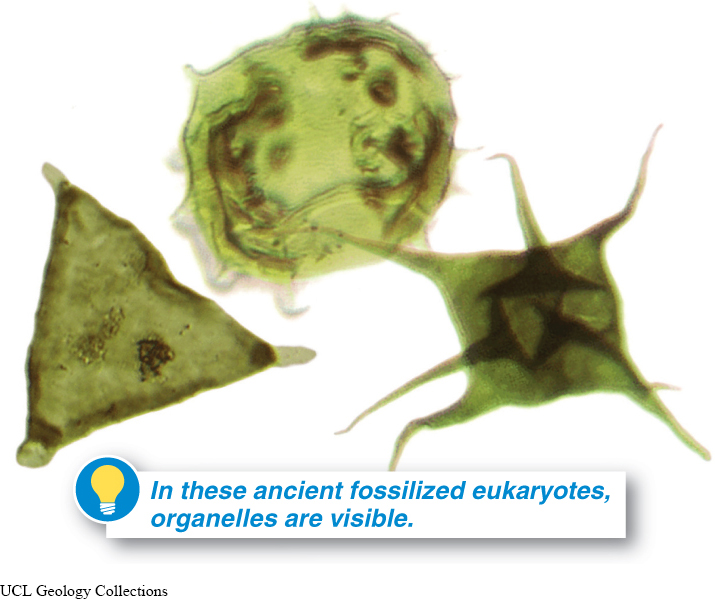
For the first 2 billion years of life on earth, organisms were extremely small—

The larger size is the first thing you notice about these fossil cells, but the internal changes in the cells are even more significant: they were the basis for the success of the entire eukaryote lineage, including humans. For the first time in the history of life, cells had internal structures that carried out specific functions. These structures, the cellular organelles, perform the specialized activities that make eukaryotic cells more complex than prokaryotes.
The nucleus is an evolutionary innovation that appeared for the first time in protists. The nucleus is a region inside the cell that is enclosed by its own double-
Subsequently, these first nuclear membranes developed two specializations: they incorporated proteins that controlled the movement of molecules into and out of the nucleus, and they extended outward from the nucleus to form a folded membrane called the endoplasmic reticulum. The endoplasmic reticulum is the part of a eukaryotic cell where some proteins are assembled. Further development of internal membranes produced the Golgi apparatus, where newly synthesized proteins are given some final processing steps, and sac-
554
TAKE-HOME MESSAGE 13.13
The nucleus is an evolutionary innovation that appeared for the first time in protists. Early protists took in a bacterial cell that subsequently became the mitochondrion, an organelle in eukaryotic cells that produces ATP.
How is the origin of the eukaryotic nucleus different from the origin of eukaryotic mitochondria?
The nuclear membrane was formed from infoldings of the plasma membrane, whereas mitochondria were formed through the uptake of a bacterium into an early eukaryotic cell.